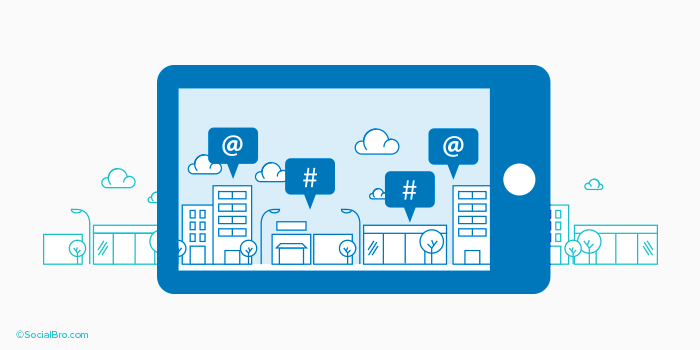Tomorrow comes today: How social media can leverage AR
Augmented reality (AR) is live video footage of the world, which has had content digitally laid over it. As the capabilities of smartphones and technology increases, a rapidly growing number of consumers will be used to their experience of a product being more than just its physical presence. The object in front of them will only be the start of their branded story, AR will expand it in ways previously unheard of and your social media strategy can take advantage of this. This example using the Cap'n Crunch cereal box is just one of the many ways that brands can use AR to connect with their audience.
Brands will need to be prepared, and that includes modern digital marketers. At this year’s Social Media Week: London, Blippar’s president of global marketing (Omaid Hiwaizi) gave several examples of how AR can be implemented into brands’ marketing activities. This in turn led us to consider how these experiences could be utilised by marketers to improve the value of their social channels, and getting more people to them. Get ready for the future, because where we’re going you don’t need roads!
User-generated content possibilities
Through gamification, or custom-made branded content, AR can provide consumers with both a deeper connection with a brand and an opportunity to connect with a wider community who are also interacting with the brand. An AR campaign from Maybelline over 5,700 people shared images of themselves virtually trying on new nail polishes.
Not only do campaigns like this provide an ample amount of earned media, but they also allow for brands to create lists of Twitter users who are engaged customers that can be targeted again with Tailored Audience lists. Using Personality Insights powered by IBM Watson you can discover the characteristics of people who get involved in these campaigns. This will give you insights into the type of people buying your products, which can influence future marketing efforts.
- “AR can allow brands to deepen interactions and continue the conversation with content attached to their products. Lucky Charms used AR to turn the cover on the box into a snowboarding-style game that kept kids (and adults) connected with the brand long after their breakfast was over.”
Omaid Hiwaizi, president of global marketing, Blippar (All subsequent quotes are also Omaid's)
https://twitter.com/Lunar_Blast/status/565475467961327617
Objects can drive social experiences
Everyday objects can be recognised by AR apps via a cameraphone, who can then provide a wide range of content with social possibilities. For example, if the camera recognises a cat, the app could suggest popular cat hashtags, a catfood brand’s social pages, or profiles of influential Twitter users who are interested in cats.
- “We’re naturally curious creatures, we constantly want to know more about the world around us. AR offers consumers an exciting opportunity to turn everyday objects into a learning experience. Scanning an apple [the fruit] can bring up recipes, history, calorific value and other content that might be of interest.”
Influence the retail experience
Before making a purchase, customers will be able to use AR in store to get a better idea of the product and if they would like to buy it. They could access reviews on social media, Tweets about the brand, and pre-purchase experiences. Not only this, but if they access the brand’s site, then they may be able to be retargeted by Twitter Ad’s website retargeting feature.
- “In a retail store, AR can add an extra layer of package space to entice customers to choose their product. It adds visual content, information about the product, and includes social data related to the product. All these things give brands more ways to connect with customers, helps the consumer make an informed choice and to get the most of the product when they come to use it.”
Continue the social message
Regular customers can get a changing experience, meaning they can continue to be exposed to social channels & ongoing campaigns without even logging in.
- “AR allows brands to change the content attached to their product over time. The message, video, or experience that they receive via AR one week might not be the same one they receive the next week - think about the product becoming a content channel in its own right. This will encourage them to return to the product for new experiences, where brands can deliver more engaging offerings and keep them updated on what’s happening with the brand.”
Wearables?
We’ve had fun looking at this topic before. Wearables will have a lot of social marketing potential, and AR can be included in the mix too. Walking through a street using smart eyewear, you could see Tweets sent from certain places, including images of them. This technology could then be applied to giving more in-depth social experiences at shops, attractions, events, and other businesses.
- “Wearables, combined with the Internet and AR will change how people interact with the world around them. The things that we’re currently doing with phones could be instantaneous with Glass-type products in the future. This will transform how we connect and how we learn, and provide enormous opportunities for brands to be present at just the right time and place.“
Seeing this technology live in action filled us with excitement about the potential that it presents to digital marketers. The practices and campaigns that will become possible can deliver a more enriching experience for a brand’s audience as well as more meaningful touch points. What ways do you think AR could assist your social strategy?







